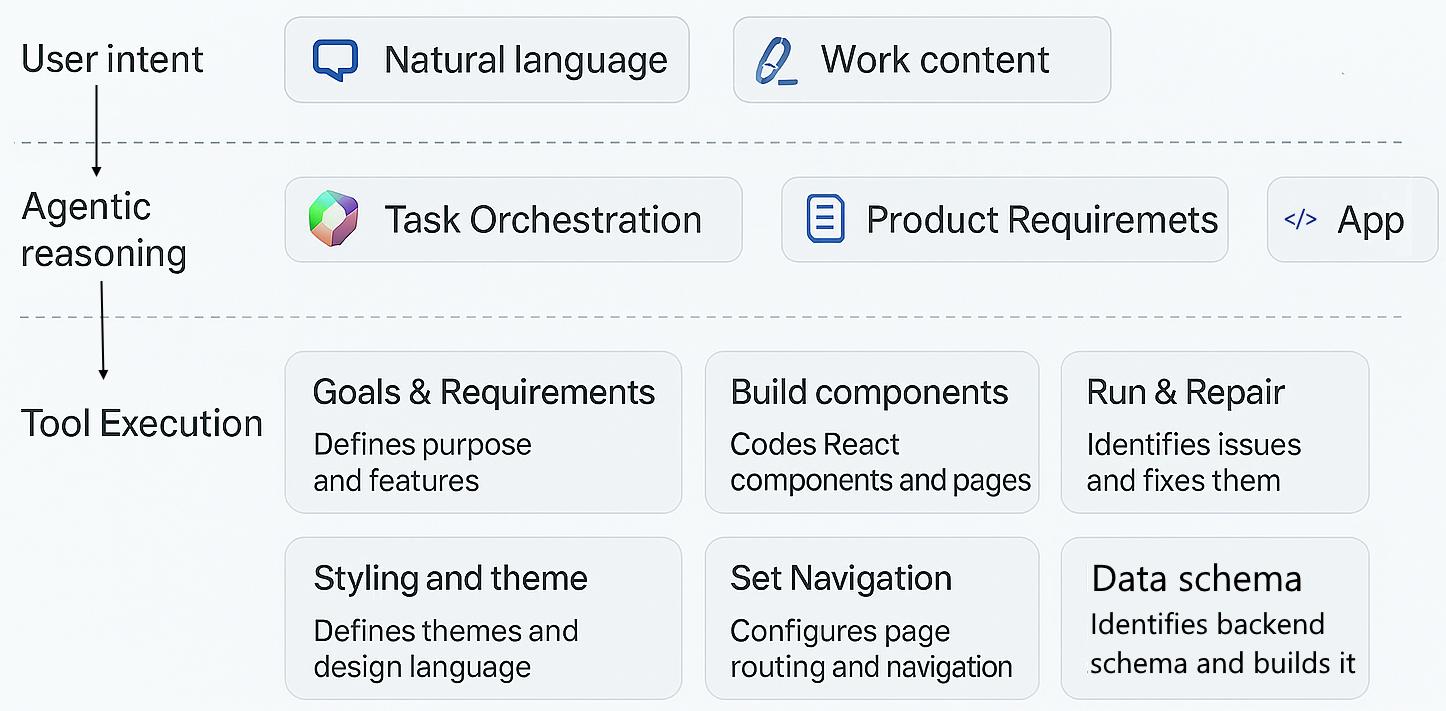Blog
Introducing App Builder - How to Build Apps with Just Words
What exactly is App Builder Agent, and how does it work? This post breaks it down, based on insights shared during the conference session with the product team.
What is App Builder?
App Builder is a prompt-based tool for building apps directly in Microsoft 365 Copilot. Compared to traditional methods of building canvas or model-driven apps, apps are designed entirely using natural language prompts.
How does App Builder Agent look like in use?
To build an app, the user describes the app that's required in natural language.

After entering the prompt, the agent builds the app and shows the progress.

At the end of this process, app builder summarises what's been done. The user has the option to further interact with the App Builder to refine the app.

On completion, this is how an app looks like.

Technically, how does App Builder work?
The user begins by entering a natural-language prompt that can include documents, such as Word and Excel files and emails.
The agent reasons over this input and creates a Product Requirements Document (ie, PRD). This defines what will be built and a list of tasks.
Next, the agent builds the app code by leveraging a range of other tools. Key tools include the Goals and Requirements, Build Components, Run & Repair, Navigation, Data Schema,and Styling & Theming tools.
The agent analyses what needs to be built and leverages
the necessary tools. It utilises only those that are necessary. If subsequent prompts are made, for example, to update the style of the app, the agent won't unnecessarily invoke the Data Schema tool.
What's the architecture of an App Builder App?
The output from App Builder is a React App that's hosted in the Microsoft cloud. Any structured data is stored in a SharePoint list that's automatically created.
Beneath the React App is an integration layer that manages connectivity to the SharePoint connector and Microsoft 365 Graph API.

The app and SharePoint site are managed together. For instance, if the app is deleted, the SharePoint site will be deleted as well.
Whilst the general guidance when using Power Apps is to use Dataverse, SharePoint was chosen as the backing store because App Builder apps are not designed for enterprise scenarios.
What's the difference between App Builder Agent and Power Apps?
App Builder is designed for personal team productivity, whereas Power Apps works best for larger-scale, enterprise apps.
Key differences are for automation, Power Apps can call Power Automate flows, whereas App Builder cannot.
Furthermore, App Builder can connect to the Microsoft Graph only, whereas Power Apps offers connectivity to the full range of 1500+ data sources in the connector ecosystem.
In terms of deployment, App Builder apps are embedded in the Microsoft 365 Copilot experience, and can run there only. On the other hand, Power Apps can run on desktop, mobile, and web devices.

What use case scenarios is App Builder Agent designed for?
App Builder Agent is designed with 4 use case scenarios in mind - Productivity, Presentation, Prototyping, and Play.
- For Productivity purposes, App Builder apps work best for smaller-scale apps that are suited to its SharePoint backend. To give an example, we could use App Builder to create a 'team lunch' app where users can vote on what food to eat. If we needed secure voting, auditing, and multi-department data entry, Power Apps would be more suited for this task.
- For Presentation purposes, we can use App Builder to build visuals that represent complex timelines or present data in ways that would be difficult to accomplish with normal Power Apps, PCF, or other traditional methods.
- In terms of Prototyping, App Builder makes it very easy to build lightweight apps to assess the viability of an idea.
- Due to its ease of use, Play is another category that's suited to App Builder. It's ideal for building quiz apps. The keynote session demonstrated the creation of a Tetris game using only natural language.
How to Govern App Builder Apps
There are 3 ways to manage the apps that App Builder creates.A common question is - can I move apps from App Builder to Power Apps or export them? For now, App Builder is designed as a standalone, lightweight tool and migration/export is currently not supported. However, this functionality may be added in the future.
How to Get Started with App Builder Agent
To get started, a prerequisite is to have a Microsoft 365 Copilot license.
Conclusion
For further details, here's the post on the Power Apps blog that announces its release.
- Categories:
- app builder
